
by admin | Sep 5, 2018 | Hyperbaric Oxygen Therapy, Stem Cell Research, Stem Cell Therapy, Studies, Traumatic Brain Injury
Traumatic brain injury (TBI) is one of the most common causes of disability in the United States, affecting over 13 million citizens. Traumatic brain injury is responsible for over 2 million emergency department visits, over a quarter of 1 million hospitalizations, and nearly 60,000 deaths each year.
Traumatic brain injury harms brain tissue in two phases. The first phase of injury occurs at the time of the traumatic incident. This initial injury may cause small or large areas of the brain to bleed. It may also shear (stretch/tear) nerve cells, making them dysfunctional. The second phase occurs hours or days after the initial injury. The brain is subjected to ongoing damage because of inflammation, cell death, and injury to blood vessels. Many people with TBI are left with lifelong problems with thinking, memory, and behavior.
In both of these phases of injury, one major way to help prevent long-term brain damage is by maintaining adequate blood flow to brain tissue. Unfortunately, once the damage has occurred, it can be a challenge to reverse the damage. Patients usually must endure months or years of physical and occupational therapy to regain what was lost. Moreover, patients often need substantial amounts of psychiatric and psychological support to treat mental health problems.
Fortunately, researchers are using hyperbaric oxygen therapy (HBOT) to improve blood flow to the brain in patients with traumatic brain injury. Hyperbaric oxygen therapy provides patients with pure oxygen (100%) at slightly higher pressures than they would experience normally. It is been used for hundreds of years to treat scuba divers who suffered “the bends” or decompression sickness; however, researchers are finding that hyperbaric oxygen therapy is a “coveted neurotherapeutic method for brain repair.”
To study the effects of hyperbaric oxygen therapy, researchers selected 10 people who had suffered mild traumatic brain injury in the previous 7 to 13 years. Patients all had brain damage that interfered with attention, memory, and thinking abilities.
Even though patients had sustained traumatic brain injury and brain damage a decade earlier, hyperbaric oxygen therapy was able to improve blood flow in the brain. Likewise, the amount of blood detected within the brain significantly increased, suggesting that hyperbaric oxygen therapy actually caused blood vessels in the brain to grow and multiply. Just as impressively, patients with chronic brain damage performed better on tests of cognition (i.e. thinking). They were able to process information more quickly, they had better motor function, and they were able to take in and process information about the world around them more efficiently.
Because people with traumatic brain damage have limited treatment options to improve their situations, these results are incredibly exciting. This was a study on 10 patients and more studies on larger numbers are still needed to build on these findings. Nonetheless, these results are quite encouraging for people with traumatic brain injury and their loved ones.

by admin | Aug 16, 2018 | Hyperbaric Oxygen Therapy, Bone Marrow, Stem Cell Research
Stem cells are generating so much excitement in research and clinical circles because they have the capacity to become many other types of cells. They also release a number of important molecules such as hormones, cytokines, and genetic material that can potentially be helpful for patients. Researchers have found that not only does hyperbaric oxygen therapy (HBOT) help in the circulation of stem cells but it also will help to mobilize stem cells from the bone marrow to the bloodstream further preparing the patient for stem cell therapy.
Bone marrow is a rich source of stem cells, but getting them usually requires an invasive procedure, i.e., placing a large bore needle into the middle of bone(s). Researchers have discovered, however, that hyperbaric oxygen treatment causes stem cells from the bone marrow to move into the bloodstream by specifically stimulating the body’s nitric oxide synthesis. Thus, instead of using a needle to extract stem cells from the bone marrow, patients can potentially increase their own bone marrow stem cells by undergoing hyperbaric oxygen treatment.
Stephen Thom, MD, Ph.D. and co-researchers at the University of Pennsylvania showed that a single hyperbaric oxygen treatment could double the number of bone marrow stem cells in the blood. This means that the hyperbaric oxygen was “mobilizing” the stem cells to move from the bone marrow into the bloodstream to allow them to move into areas of the body that benefit from them. Moreover, when study subjects underwent 20 treatments of hyperbaric oxygen therapy over a few weeks, the number of bone marrow stem cells in the blood increased significantly by eightfold. This astonishing finding has been confirmed in subsequent experiments.
The most important conclusion from this research is that hyperbaric oxygen therapy treatments can unlock the potential of a person’s own bone marrow stem cells without an invasive procedure. While many scientists assumed that the benefits of hyperbaric oxygen therapy were due to the high concentrations of oxygen infusing the blood, tissues, and cells, they now have research to support that these benefits may also be due to stem cell mobilization.

by admin | Aug 2, 2018 | Hyperbaric Oxygen Therapy, Stem Cell Research, Stem Cell Therapy, Studies
While most approaches to stem therapy involve infusing purified stem cells into the body, Thom and fellow researchers have shown that hyperbaric oxygen therapy (HBOT) is capable of stimulating the body to produce its own stem cells. Thom, Heyboer, and co-authors have extended this work by showing that by slightly increasing the pressures used during hyperbaric oxygen therapy, one can significantly increase the number of stem cells produced.
In his original work, Thom and colleagues showed that a single, two-hour session of 2.0 atmospheres (atm) pressure (twice the air pressure we normally feel at sea level) was capable of doubling the number of stem cells in the bloodstream. Twenty treatments increased stem cell levels by 800%. To study this phenomenon more closely, Thom’s research group recruited 20 patients to undergo hyperbaric oxygen treatment, some at the original 2.0 atm pressure, and some at 2.5 atm. The primary goal of this research was to find out whether a higher pressure was capable of eliciting a greater number of cells.
As before, treatment with 2.0 atm of hyperbaric oxygen substantially increased the number of stem cells found in the blood. However, treatment with 2.5 atm doubled or even tripled the number of stem cells produced compared to the 2.0 atm treatment session. In other words, a slightly higher pressure causes the body to produce substantially more of its own stem cells.
Researchers focused on two types of stem cells, in particular, CD34+ and CD45-dim—markers that appear on stem cells and/or progenitor cells. They are primarily found on cells in the bone marrow. Stem cells with CD45-dim generally go on to become bone, blood, or blood vessel cells, while CD34+ cells can differentiate into almost any cell. Hyperbaric oxygen therapy is thought to stimulate the bone marrow to produce and release these stem cells into the bloodstream, which is the reason these treatments raise stem cell levels in the blood.
The results published by Thom and coworkers suggest that patients who wish to enhance the number of stem cells should consider undergoing hyperbaric oxygen therapy. Furthermore, the greatest number of stem cells was observed after 20 treatment sessions, suggesting that a greater effect occurs with more treatments.

by admin | Jul 13, 2018 | Hyperbaric Oxygen Therapy, Stem Cell Therapy
Chronic fatigue syndrome, also known as systemic exertion intolerance disease, is a challenging condition for many patients, their families, and the doctors who care for them. The illness is difficult to diagnose since not all symptoms will appear in every patient. Some do experience feeling chronically fatigued yet may not have chronic fatigue syndrome.
Most patients with chronic fatigue syndrome have a sudden onset of fatigue that may occur soon after an infection, such as a cold, pneumonia, or mononucleosis. Patients with chronic fatigue syndrome usually experience overwhelming fatigue that may interfere with sleep and the ability to think and concentrate. Symptoms tend to get worse after periods of heavy physical activity, but may also occur after simply rising from a seated position or standing for a long period. Importantly, most patients with chronic fatigue syndrome began life with few or no symptoms. Many were previously high functioning in their daily lives who are now impacted by the symptoms they experience.
Just as chronic fatigue syndrome is difficult to diagnose, it is also difficult to treat. Not every treatment will work for every patient. In fact, there is no widely accepted, specific treatment for chronic fatigue syndrome. Treatment is mostly supportive and aimed at reducing symptoms. While many medications have been tried such as antidepressants, steroids, stimulants, vitamin B12, essential fatty acids (and many others), no drug treatment has been consistently successful at helping people with chronic fatigue syndrome.
A recent report by Akarsu and colleagues may offer some hope for people with chronic fatigue syndrome. Sixteen patients with confirmed chronic fatigue syndrome received 15 sessions of hyperbaric oxygen therapy over a period of three weeks. Each treatment was for 90 minutes in a hyperbaric oxygen chamber. Participants in the study agreed to stop all physical therapy or medication for chronic fatigue syndrome so that those treatments would not interfere with the results of the study.
The research group found that chronic fatigue syndrome patients tolerated hyperbaric oxygen therapy very well, and had no complications. In all measures tested, patients were significantly better after treatment than they were before hyperbaric oxygen therapy started. Specifically, patients had better scores on two clinical tests of fatigue (visual analog fatigue scale and the Fatigue Severity Scale) and in a quality of life assessment (Fatigue Quality of Life Score). The improvement in scores was not subtle—in each test, there was a clinically significant increase in the average score. The results showed that hyperbaric oxygen therapy significantly and substantially reduced fatigue and improved quality of life in patients with chronic fatigue syndrome/systemic exertion intolerance disease. These results are incredibly encouraging since they indicate hyperbaric oxygen therapy may be an effective treatment for those battling chronic fatigue syndrome.

by admin | Jul 10, 2018 | Hyperbaric Oxygen Therapy, Stem Cell Research, Stem Cell Therapy, Traumatic Brain Injury
A technique called hyperbaric oxygen therapy (HBOT) has been shown to help patients with traumatic brain injury (TBI) who are suffering from a chronic neurological injury. HBOT appears to confer its benefits to these patients by increasing the neuroplasticity in the brain – or, in other words, by making it easier for the brain to re-wire itself. When the brain has a higher degree of neuroplasticity, it is easier to recover from neurological injuries because the brain can find ways to re-wire and restore functions that were lost due to damage to brain tissue.
A new study, published in Frontiers in Human Neuroscience, investigated the effects of HBOT on prolonged post-concussion syndrome (PPCS) that occurs as a result of TBI. The researchers used imaging strategies to monitor the brains of 15 patients with PPCS and evaluated the patients with tests of cognition. The researchers gave each patient 60 treatments with HBOT. The treatments were initiated anywhere from 6 months to 27 years after the patients had sustained their injuries.
Using imaging techniques called Dynamic Susceptibility Contrast-Enhanced and Diffusion Tensor Imaging (DTI) MR sequences, the researchers observed that HBOT increased blood flow and volume in the brain and that it led to the generation of new blood vessels. Using various cognitive tests, the researchers also found that HBOT improved memory, information processing speed, and executive functions.
Based on these findings, the researchers concluded that HBOT is beneficial for patients with TBI by inducing neuroplasticity in the brain, improving the integrity of microstructures of both white and gray matter within the brain, and allowing for the regeneration of nerve fibers. Future research will help clarify further benefits of HBOT and how the brain responds to this treatment.

by admin | Jul 3, 2018 | Health Awareness, Hyperbaric Oxygen Therapy, Stem Cell Therapy
Hyperbaric Oxygen Therapy (HBOT) is a powerful treatment used to aid in the healing of many conditions and illnesses. Individuals who undergo this unique form of therapy sit in a controlled environment, called a chamber, with higher levels of oxygen and increased atmospheric pressure. Together, the pressure and high oxygen concentration help to oxygenate the blood, which can facilitate cellular regeneration, healing of wounds, and decreases in inflammation levels. The therapy can treat burns and sores, concussions, sports injuries, and decompression syndrome, among other ailments.
In fact, the benefits of HBOT span so far and wide that some individuals have even sought to bring the treatment into their own homes. This is done using soft HBOT chambers, which are different from the hard medical-grade chambers that are operated by professionals in treatment centers. Here, we walk you through the key differences between hard and soft chambers to help you make informed decisions about your treatment options.
Hard HBOT Chambers
To understand the most crit ical differences among hard and soft chambers, it’s important to revisit the two key principles of HBOT: oxygen and pressure. Combining these two factors to facilitate an environment in which expedited healing can take place is what makes this form of therapy so effective. In hard chambers, the air features 100% medical-grade oxygen and is commonly pressurized to a maximum atmospheric absolute (ATA) of up to 3.0, or a depth of 66 feet. They are specifically built to achieve pressures for therapeutic purposes, and some can go to 6.0 ATA.
ical differences among hard and soft chambers, it’s important to revisit the two key principles of HBOT: oxygen and pressure. Combining these two factors to facilitate an environment in which expedited healing can take place is what makes this form of therapy so effective. In hard chambers, the air features 100% medical-grade oxygen and is commonly pressurized to a maximum atmospheric absolute (ATA) of up to 3.0, or a depth of 66 feet. They are specifically built to achieve pressures for therapeutic purposes, and some can go to 6.0 ATA.
The immense level of healing achieved through these systems is backed by thousands of clinical studies and has even been shown to aid in bone and tissue regrowth. Conditions that have shown benefit with HBOT in conjunction with stem cell therapy are Multiple Sclerosis, Traumatic Brain Injury, Post-Stroke, and Sports Injuries to name a few. This is because hard chamber HBOT can mobilize stem cells (CD34+ pluripotent cells) responsible for the regrowth of significantly wounded areas. Hard HBOT chambers can also kill harmful bacteria.
Because these hard-sided chambers are found only in medical or therapy centers and controlled by trained professionals, the risks of breathing contaminated or polluted air are mitigated. In addition, hard chambers meet the American Society of Mechanical Engineers Pressure Vessels for Human Occupancy (ASME-PVHO-1) standard. However, because it is illegal to purchase medical-grade oxygen without a prescription, this form of therapy can only be received under the care of specialists.
Soft-Sided HBOT Chambers
Unlike hard-side d chambers, soft-sided HBOT chambers are portable and can be purchased for home use. They typically feature a steel frame with a zipped inflatable chamber. Oftentimes, they are used as a temporary treatment for divers and mountain climbers suffering from decompression syndrome and altitude sickness when they are already in route to receive HBOT in a hard chamber. On the surface, soft HBOT chambers might seem like a convenient alternative to receiving therapy at a treatment center. Yet, research shows that these solutions are ineffective for achieving the same level of benefits provided by hard chambers, and in fact, using them can put patients at risk.
d chambers, soft-sided HBOT chambers are portable and can be purchased for home use. They typically feature a steel frame with a zipped inflatable chamber. Oftentimes, they are used as a temporary treatment for divers and mountain climbers suffering from decompression syndrome and altitude sickness when they are already in route to receive HBOT in a hard chamber. On the surface, soft HBOT chambers might seem like a convenient alternative to receiving therapy at a treatment center. Yet, research shows that these solutions are ineffective for achieving the same level of benefits provided by hard chambers, and in fact, using them can put patients at risk.
Let’s return to the two components needed for effective HBOT: oxygen and pressure. While the air in hard chambers is 100% medical-grade oxygen, soft chambers used at home feature regular ambient air, with just 21% oxygen. Plus, they can only be pressurized to 1.3 ATA, or a depth of roughly eight feet. This lower pressure level is simply not enough to facilitate healing. Used in conjunction with 100% oxygen (which again, can only be administered by medical professionals), it can be used as a temporary treatment for altitude sickness and decompression syndrome – but that is all the FDA approves soft-sided HBOT chambers for. Therefore, they serve little purpose in the home setting. In fact, it isn’t recommended for soft chambers to be used for any type of healing outside of treating the two conditions described above. Not only are the oxygen and pressure levels too low to achieve treatment, but the environment can promote the growth of undesirable aerobic bacteria. Soft chambers do not meet the ASME PVHO-1, have not been proven to promote healing through clinical research, and may even pose risks of breathing in polluted or contaminated air.
Ultimately, soft chambers may provide medical benefits in very specific circumstances, but hard chambers are the only vessel for HBOT that can support all types of healing by oxygenating the blood and stimulating stem cells. When practiced under the care of trained professionals, hard chamber HBOT poses few minimal risks and can make a significant difference in improving an individual’s quality of life.


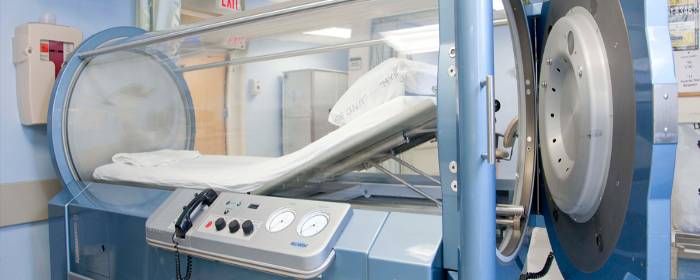
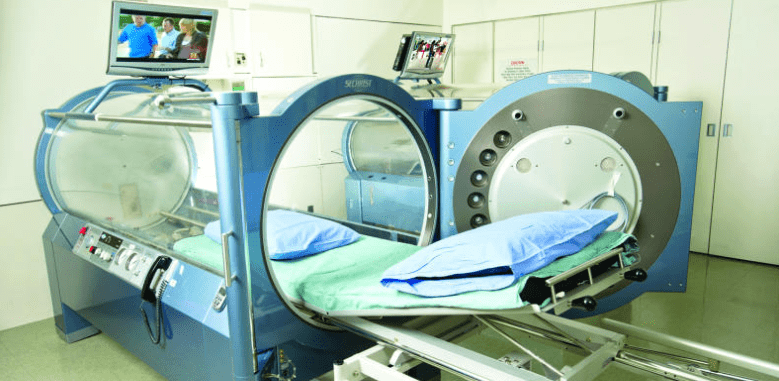

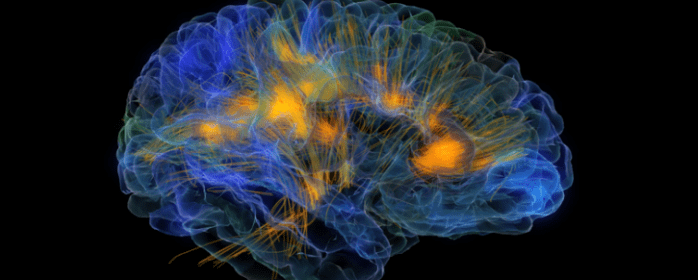

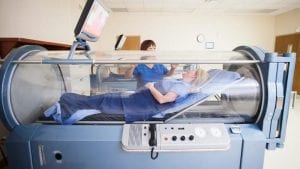
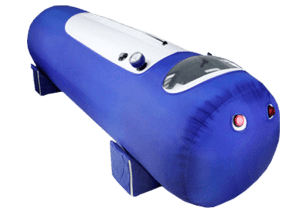
 St. Petersburg, Florida
St. Petersburg, Florida
